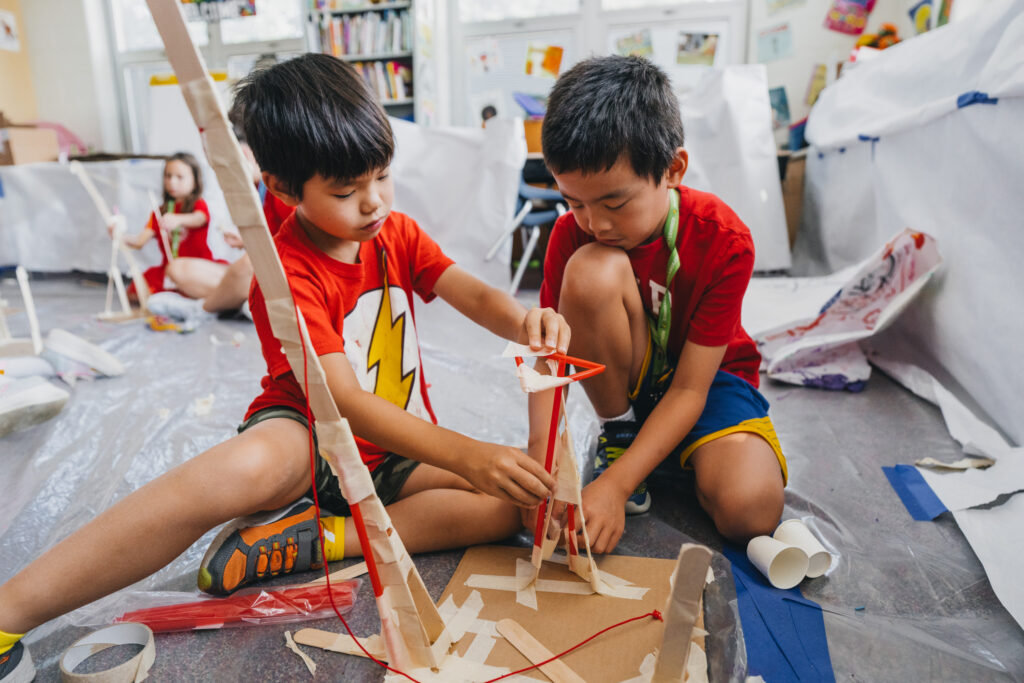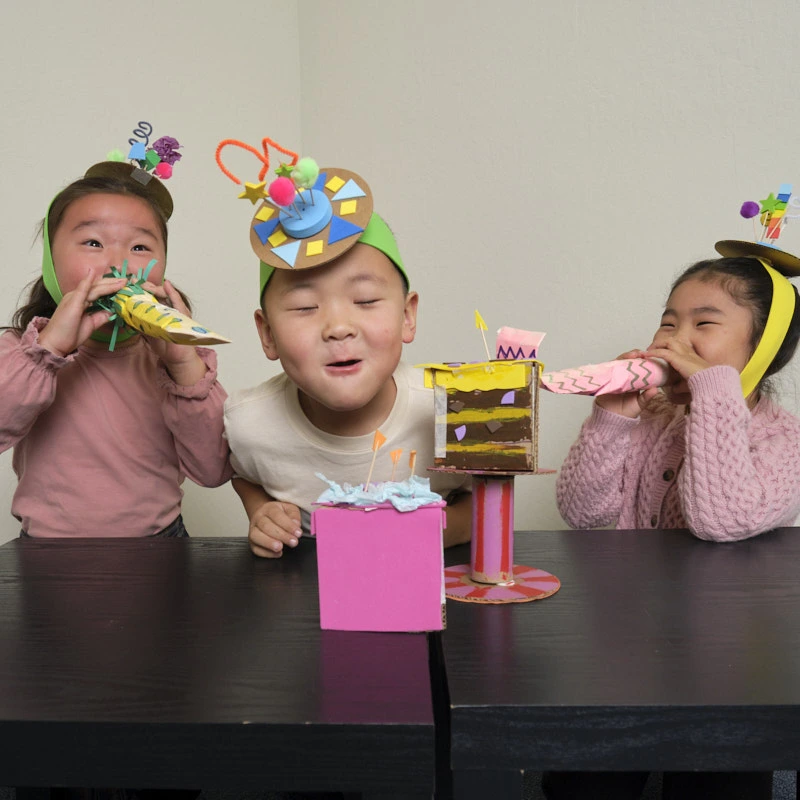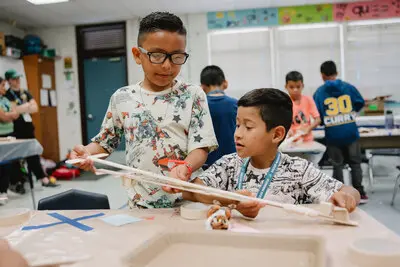Part 1 of a 3-Part Series on “Strategies from Camp Galileo For Building Creative Confidence and An Innovator’s Mindset”
Picture this: Your child is working on a project and hits a roadblock, becoming increasingly frustrated. You can see exactly what’s wrong and could swoop in and fix it in thirty seconds, but you hesitate. You’ve heard children learn more when they figure things out themselves and that resilience comes from working through challenges and even failures. So you wait, torn between wanting to step in and knowing that stepping back might be better.
This tension lies at the heart of modern parenting. We want our children to be capable, confident problem-solvers who can handle life’s inevitable setbacks. Yet when we see them frustrated, confused or upset, every fiber of our being wants to make things better…and quick!
This same dilemma plays out in classrooms, on sports fields, and yes, at summer camps. Just as many parents do, our staff struggle daily with the fundamental question: How do we help build the skills they need to thrive without robbing them of the very experiences that build their strength? Or as Jonathan Haidt, author of The Anxious Generation is fond of saying, how can we “prepare the child for the road, not the road for the child?”
Haidt, in collaboration with Dr. Becky Kennedy, founder and CEO of the global parenting movement Good Inside, asserts that our kids need more freedom in the real world (and more protection online) in order to be prepared for the road ahead, and we tend to agree. In their guide “5 Strategies to Free the Anxious Generation,” they propose
“a key protective factor for kids – and a factor that counteracts anxiety – is feeling competent and capable. And competence is only developed as kids watch themselves navigate challenges, struggle, try things on their own, and eventually figure things out.
In fact, when we ‘rescue’ our kids by stepping in too fast and doing things for them that they can do for themselves, we end up building our child’s anxiety and fragility, because our kids never experience themselves as capable of coping and getting through tricky experiences.”
At Camp Galileo, we’ve built our entire program around creating “tricky experiences” that unlock the innovation skills kids need to thrive—creative problem-solving, persistence in the face of challenges, and productive collaboration with others. Each outrageously fun Galileo activity is a carefully crafted opportunity for kids to develop their creative confidence and their Innovator’s Mindset, becoming more visionary, courageous, collaborative, determined and reflective.
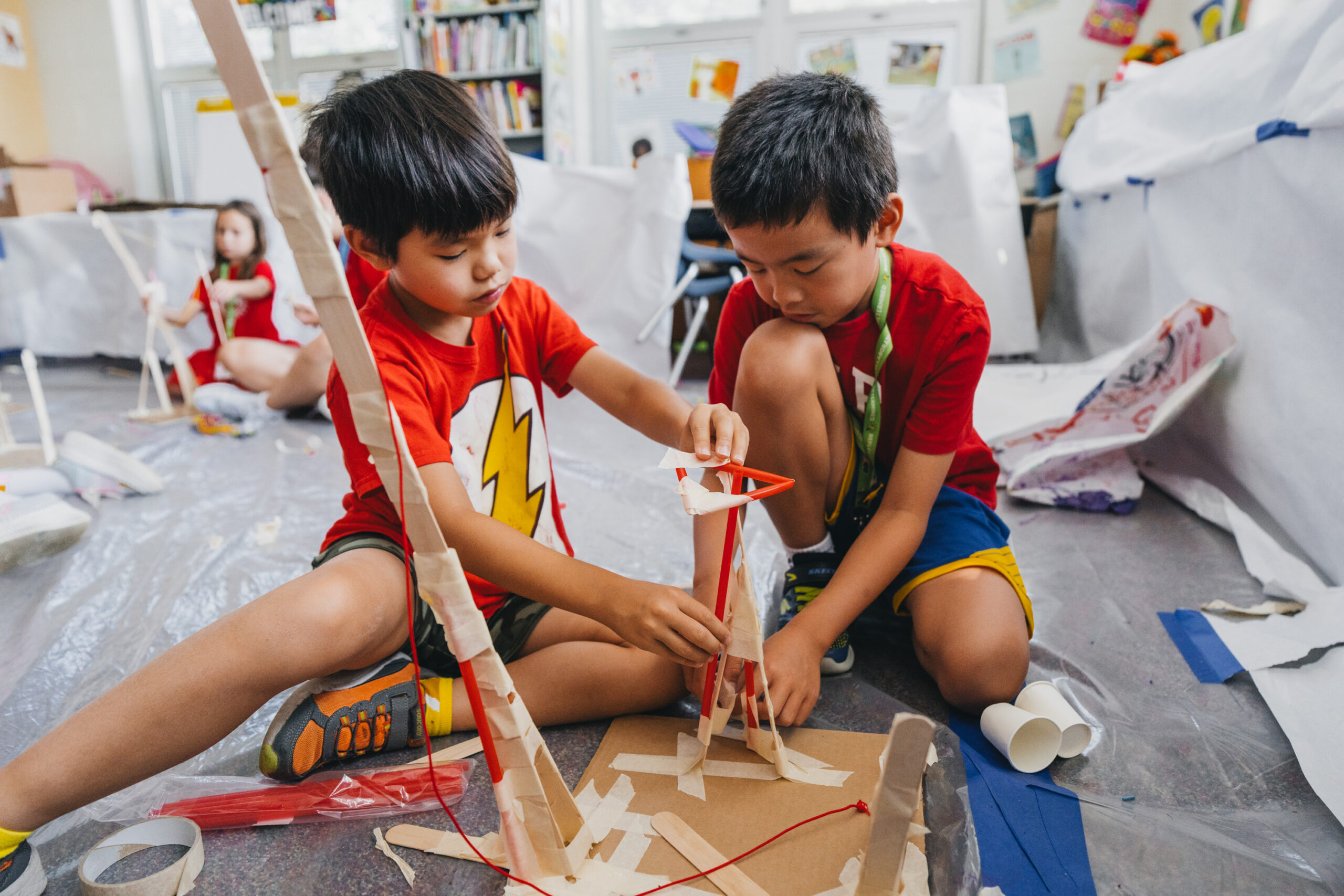
We teach our camp instructors three key strategies to develop these mental muscles in children.
The good news: these strategies are not just for camp! There are many opportunities to adapt them to parenting, too.
The bad news: they can be hard to stick with! Not because they are technically challenging, but because they require fighting our natural protective instincts and putting our kids—and ourselves— in situations that can feel challenging, uncomfortable, and frustrating.
Strategy 1: Self-guided discovery vs. step-by-step instruction
Every day at Camp Galileo, K-5th grade campers have a rotation called Innovator’s Studio where they work independently to create polished STEAM projects to take home.
Take our “Animal Bot” project for Supernovas (rising 4th and 5th graders).
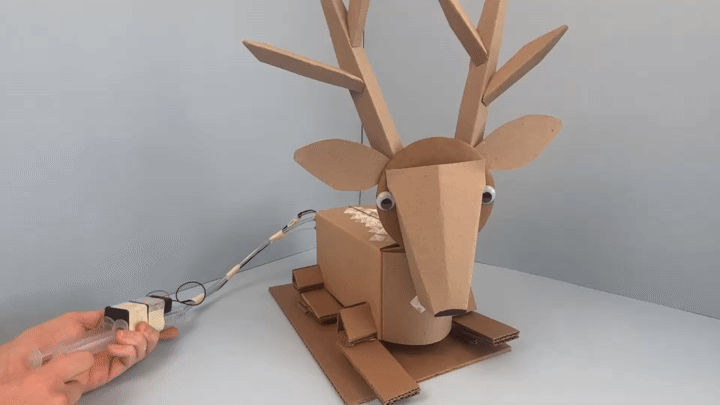
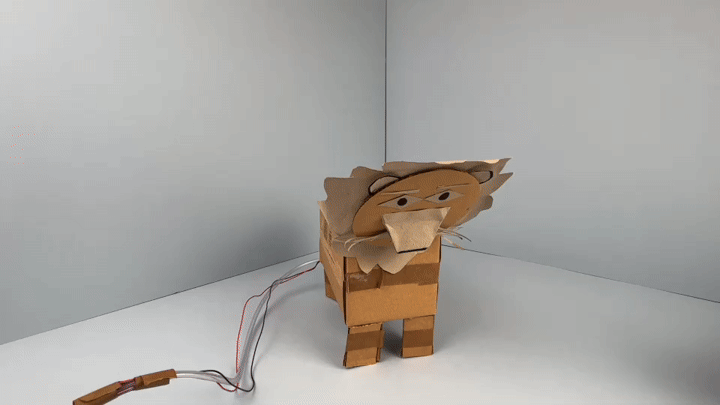
For this project, campers select the type of animal (real or imaginary) that they want to make, design its features out of cardboard, and use a combination of pneumatics and offset motors to engineer its movements in just the way they want. Within broad constraints, campers are supported to bring their unique vision to life.
Over the course of 4-5 sessions during a camp week, our campers will complete dozens of individual building and design steps to create their Animal Bot. So it is tempting to take things one step at a time, ensuring that every child has completed each step “correctly” before moving on to the next. And ensuring that the final product looks exactly “as designed.” But this is NOT what you’ll see at Camp Galileo. Instead of teaching step-by-step, our instructors give demonstrations and directions in “clusters,” leaving ample room for self-guided work and discovery. We start with a discussion of the intended outcome, encourage campers to think about the ways in which they might explore different variations, and then walk through a series of knowledge-building demonstrations before asking campers to head to their work stations and get building.
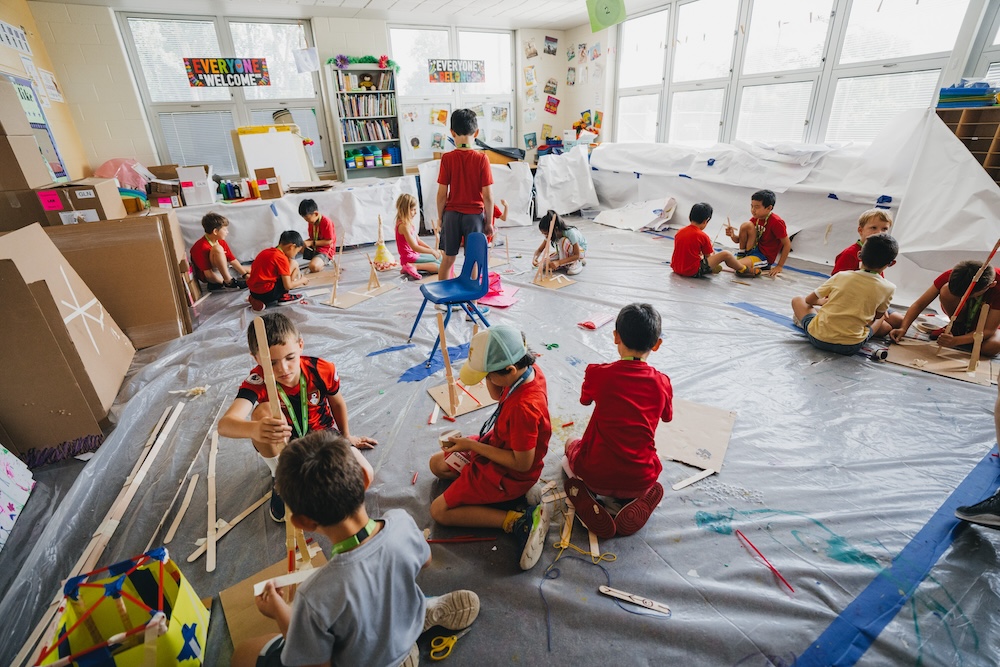
Sticking to this approach is consistently among our instructors’ biggest challenges. It is not the most direct way to produce a room full of perfectly-polished projects. And it is certainly not the best way to protect campers from making mistakes and getting frustrated. So why do we do it this way? And why is it so hard??
It’s hard because being a Galileo instructor—and a parent in many settings—requires you to re-think your definition of what success means for the children in your care. Is success coming home with a project that looks exactly like the pictures on our website? Or is it coming home with the competence that can only be developed when kids “navigate challenges, struggle, try things on their own, and eventually figure things out?”
A step-by-step approach essentially does the thinking for children. It emphasizes compliance and reinforces the concept—rarely true in the real world—that there is only one right way to work. It may help children become excellent at following instructions, but doesn’t give them any practice solving novel problems that don’t come with a manual. In contrast, an approach based on self-guided discovery opens the door to more mistakes and re-work. It can be slower (or faster!) and less predictable-characteristics we’re conditioned to think of as problems or bugs, but they are features here as they set the stage for productive struggle, creative problem-solving, working at one’s own pace, and a wide array of innovative outcomes that almost always extend beyond the imaginations of the adults in the room.
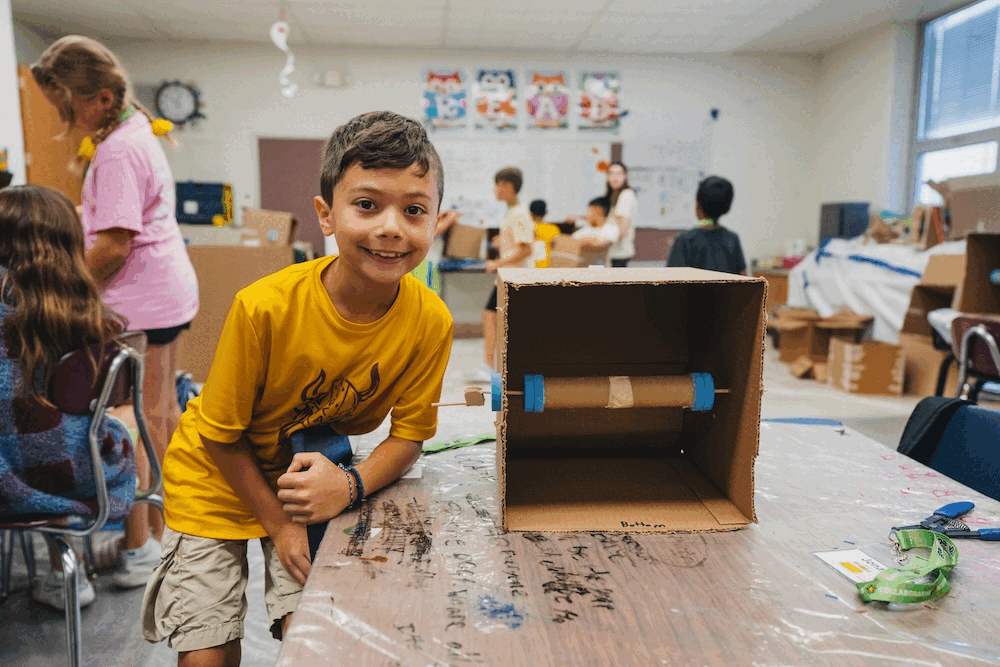
When children see themselves navigate challenges and make their own discoveries, they develop what developmental psychologists call perceived competence—the belief that they can handle whatever comes their way. At camp, in the classroom, and in day-to-day life this requires that adults relinquish some control, allowing for a slightly more chaotic environment (for example where kids are working on different challenges at different times, or in slightly different ways). It requires that adults express confidence in children’s abilities to navigate increasingly complex processes without needing to pause for external validation at each step, and that they demonstrate that confidence by resisting the urge to jump in to “rescue” children as they face challenges, or to share your interpretation of the “right” path to a good outcome.
To get comfortable with this, look for situations where you may be inadvertently providing your child(ren) with a “manual” where self-guided exploration might be a better option, and shift your approach to prioritize their choices and independence. Pay specific attention to where the need for perfection or urgency may not be quite as high as you might initially imagine. Some examples include:
- Room Organization
- Step-by-step: “Put your books on this shelf, clothes in these drawers, toys in these bins.”
- Self-guided discovery: “How can we make space in our playroom to create the reading fort you’re imagining?” or “What’s your plan for putting your toys away?”
- Craft Project
- Step-by-step: “Use this template to cut out felt pieces and glue them together to make a bookmark.”
- Self-guided discovery: “You want to make something special for Grandma’s birthday. What could you create with these art supplies?”
- Getting Dressed
- Step-by-step: “Put on shorts and a t-shirt.”
- Self-guided discovery: “What do you want to wear today?” or “How can you get dressed so you’ll be comfortable playing outside?”
Having observed hundreds of instructors over the years-and as parents ourselves-we know this shift is easier said than done! Like any of the skills we teach at Camp Galileo, it takes practice and iteration to become more effective and comfortable, and the benefits for you and your kids are well worth the productive struggle.
Come back soon for posts on our next two strategies for building creative confidence and an innovator’s mindset!
